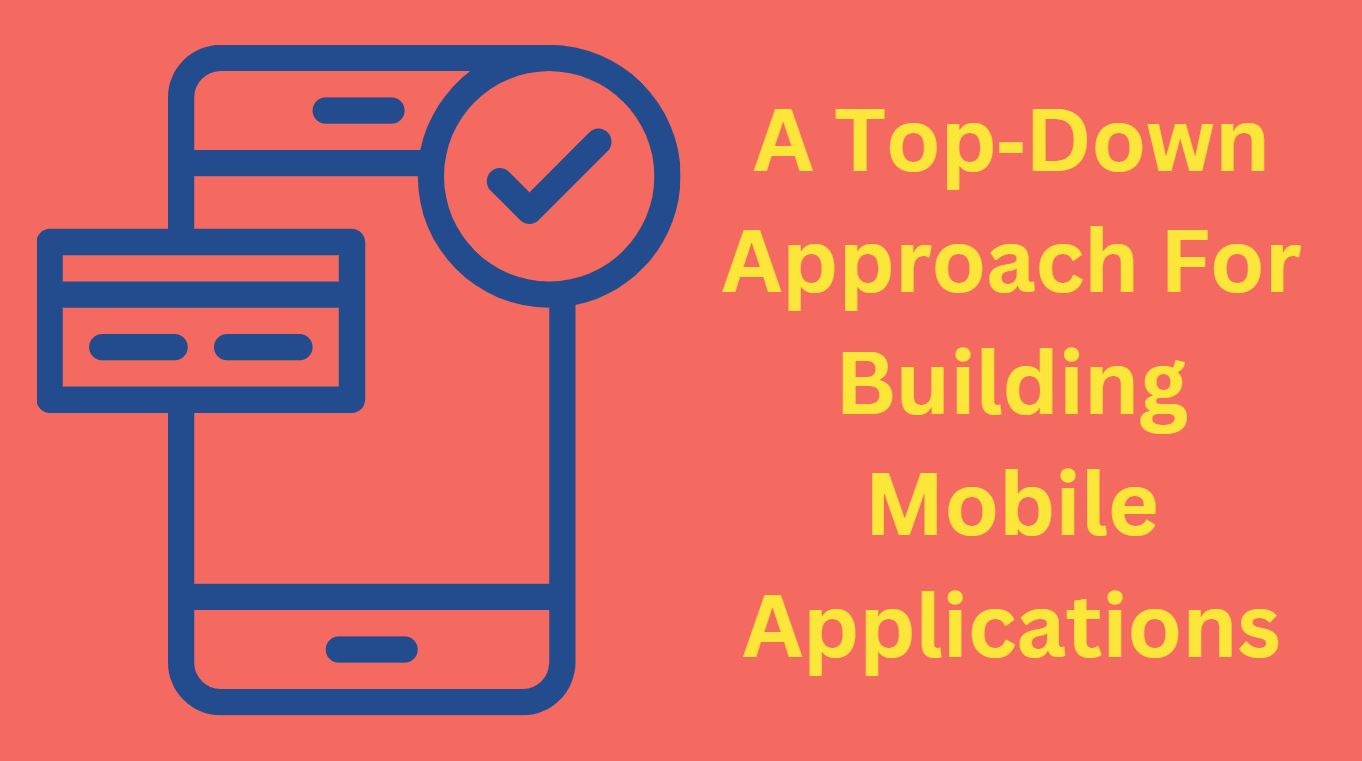- Likes
- Followers
- Followers
- Followers
- Subscribers
- Followers
- Members
- Followers
- Members
- Subscribers
- Subscribers
- Posts
- Comments
- Members
- Subscribe
A Top‐Down Approach For Building Mobile Applications

You will see top down and bottom up both the terms being used in many areas of business, investing, finance, economics, and taking on projects like building mobile application even though both these are standard terms, but many times investors don’t clearly understand the two different approaches or they get confused.
We have found a more natural way for you to understand while building mobile applications.
Top-Down vs. Bottom-Up
The top-down approach starts from the general idea or the big picture and goes to specifics. Whereas, the bottom-up approach begins with specific and moves towards the general idea.
When used comprehensively, these approaches can be used for a vast range of endeavors, including goal setting, forecasting, and budgeting.
More About The Top-Down Approach
The top-down approach involves using comprehensive aspects as the base of making important decisions. This approach strives to determine the big picture and all components that affect it and are going to be the driving force to achieve the end goal.
The top-down approach seeks for a perspective that tells how systematic factors affect the outcome you are trying to achieve. When building your corporate mobile app, it may mean understanding how big picture trends can affect your employee productivity. Work productivity is improved by 34% when organizations allow employees to use corporate mobile apps.
Top-Down Approach For Building Mobile Applications
The top-down approach initiates with the big picture or the basic idea. It is then broken down into smaller segments or specifics based on the main idea. It is the ideal approach to formulate an overview of the system, as well as to gain insights into the subsystems.
However, as every app is different, so our approach also evolves with it. Here is a fairly standard process to implement when building your corporate mobile app by integrating a top-down approach.
1. Idea
All successful apps begin with a great idea. For e.g. Uber, the world’s most famous ride hailing service, came through because its founders wanted people to commute without having to wait and through their discretion.
So the best place to start is to consciously look for problems you see people facing around you and then focusing on their potential solutions. Let’s imagine your idea is to build a process management app for your company.
2. Strategy
Once you have figured out your app idea, now you need to plan how to make your app successful. You may want to check your competitors (if any) and find out the overall solutions you want your app to solve.
You might want to find the element that gives your management app the competitive advantage or what makes it the best app for your employees.
3. Information Architecture
Posts You May Like
At this step in the process, you need to decide the data and functionality your app needs and how to organize it.
You need to list down the features and functionalities that make your app unique and how it can effectively address the problems you want to solve.
For your management app, you might want to incorporate a real-time chat box for employees to communicate, a calendar to mark meetings and events, and a range of other functionalities.
4. App Wireframes
Taking your information architecture as the building blocks, you start creating app screens for each app function and data.
5. App Workflows
Workflows define the navigations or pathways users can take to travel within your app. Take note of everything you may want your users to do and notice how many clicks they take to complete the action.
6. User-Interface Design
Customized user-interface designed for your target users will improve the app’s usability. Keep a consistent design tone, and it will make your users more comfortable within the app.
7. Prototypes
Prototypes are the click-through models of your app that help you text the wireframes and workflows. It enables you to experience what it would be like using the actual app.
You might want to see of the chat feature in your mobile corporate app is user-friendly or if the task management function caters to the unique nature of your work or industry.
8. App Development
Once you have a final idea, strategy figured out, and the prototype function just how you wanted your app to perform, it’s time to develop the app. Here you will also need to choose as to which platform would be best suited for your app. For e.g. Android app development is a lot easier to go through than iOS so most firms making their apps opt for the former OS’s app store to host their apps.
Once you are done with this, your in-house or outsourced development team will start implementing your specific style and functionality in to the app.
9. Quality Test of mobile applications
Ideally, you want two different groups of people to test your app, non-developers and developers. Where developers will analyze the app from a technical perspective, non-developers can provide you with user based quality assurance which will give you genuine insight into the real experience your app offers.
Conclusion
There is no doubt that a corporate mobile application can fuel your business growth and increase your market competitiveness. However, to ensure the success of your digital transformation, you want to adopt a top-down approach for building mobile application from the first go to ensure the final product meets every expectation of all stakeholders involved including those in the upper management, the investors, and finally the employees.
Image credit- Canva


Comments are closed.